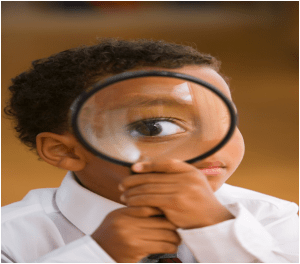Humans are very visual creatures and it all starts as soon as we are born. As newborns, the structure of clear objects is not yet fully formed but we can still detect changes in brightness and see the difference between stationery and moving objects. However, before we even begin to distinguish and recognize objects, our brains are busy processing and trying to understand what we see.
As we develop, our brain begins to associate what we see with something, even if we don’t fully understand the meaning of that object. Visuals connect us to the world as soon as we are born because our brains are innately designed to love images.

Over the past decade, the internet has experienced a massive increase in the use of visualized images and information. Following this trend, businesses and companies increasingly use visuals to advertise and get involved. Why? Because they understand that science shows how much humans depend on visual cues above all.
Nearly half of the brain is used for visual processing. Despite having 5 senses, 70% of all our sensory receptors are found in the eye. Our eyes are far more effective than our other senses so we can see and process images in less than a tenth of a second! Consider how your business can benefit from better visuals with Digital Signage from moodmedia.co.uk/sight-solutions/digital-signage/
Visuals are easier to understand and stronger for us than relying on text alone. Research has shown that only 20% of what we read is remembered, only 20% of what they see is remembered but 80% of the information that people see and do will be remembered.
Most importantly, visually evokes emotions, whether it is disgust, hate, happiness, surprise, anger or sadness. What we see produces strong emotions in all of us and the brain likes emotions even more than they like images. The way we feel and how the brain processes emotions is what makes us move – how we survive and react.
Humans are actively looking for visuals because of the way they produce emotions. This connection is what we desire, and no matter what emotion is generated, from admiration to despair, excitement to horror – it doesn’t need to be a positive image to create that connection. Emotions help us survive, make decisions, and better understand the world around us.

These raw emotions are the strongest connections we make to visual content and they come from areas of the brain that are associated with survival instincts such as reactions to fight or run. Responses come from our subconscious, directly from our central nervous system.
It’s important for businesses to recognize the importance of visuals because 60% of customers are more likely to visit online businesses that have images in search results. 67% of consumers admit that a good, clear image is more important than customer reviews or product information!
To see interesting information visually is more interesting and if well designed, interest can be generated before the information is fully processed. The visual that works best must be easily interpreted because our brain is designed to interpret the relationships between objects, giving us direct understanding with the least amount of effort.



